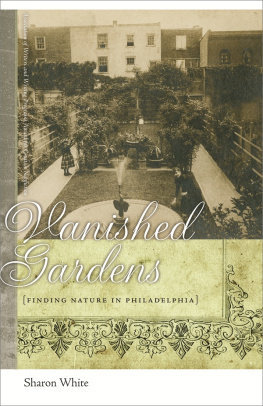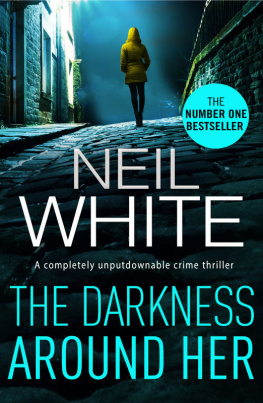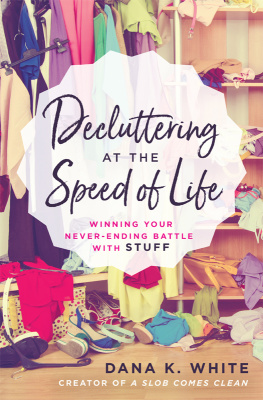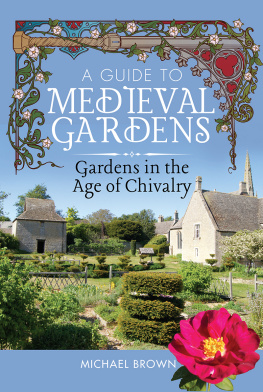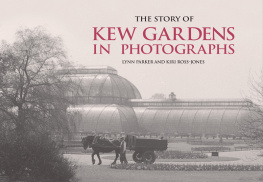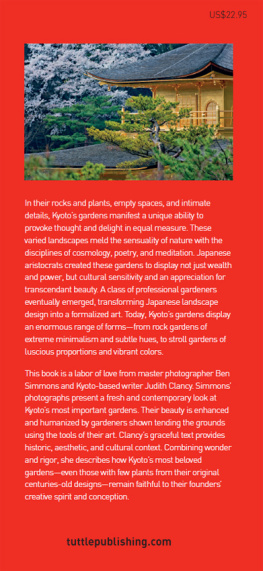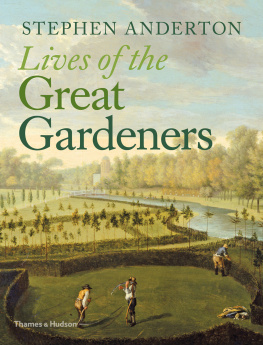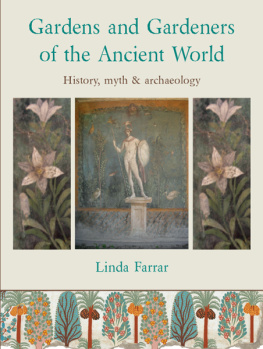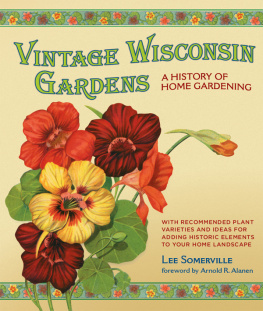Copyright Information
ISBN for this digital edition: 978-0-8203-3973-3
Copyright information from physical edition of book:
Published by the University of Georgia Press
Athens, Georgia 30602
www.ugapress.org
2008 by Sharon White
All rights reserved
Designed by Mindy Basinger Hill
Set in 11.25/15 Adobe Jenson Pro
Printed and bound by Thomson-Shore
The paper in this book meets the guidelines for permanence and durability of the Committee on Production Guidelines for Book Longevity of the Council on Library Resources.
Printed in the United States of America
12 11 10 09 08 c 5 4 3 2 1
Library of Congress Cataloging-in-Publication Data White, Sharon, 1953
Vanished gardens : finding nature in Philadelphia /
Sharon White.
p. cm.
Includes bibliographical references.
ISBN-13: 978-0-8203-3156-0 (hardcover : alk. paper)
ISBN-10: 0-8203-3156-2 (hardcover : alk. paper)
1. Historic gardensPennsylvaniaPhiladelphia. 2. PlantsPennsylvaniaPhiladelphia. I. Title.
SB451.34.P4W45 2008
712.09748'11dc22 2008014141
British Library Cataloging-in-Publication Data available
Title page and part title page image Hlne Valle / istockphoto.com
Dedication
IN MEMORY OF ALMITRA DAVID
Epigraph
I leave to the various futures (not to all) my garden of forking paths.
JORGE LUIS BORGES
Contents
SPRINGETTSBURY
KINGSESSING
GLADWYNE
Springettsbury
THE PRETTIEST OLD-FASHIONED GARDEN
1. Grapefruit
MY FIRST GARDEN WAS TROPICAL. I planted it in my great aunts backyard in Florida with dust and rocks and dry thick leaves as big as my hand. Light filtered through grapefruit trees. Banana trees rustled in the warm wind. I played there for hours alone with my dolls. One morning I made a water garden in a small dusty pool bordered with stones. I pretended there were seahorses swimming in the pool. As I played I could smell the sweet sharp fragrance of grapefruit ripe in their rough bright skins. My aunt thought I was unhappy. I was such a quiet little girl content to play near the yellow light of the citrus trees.
Now I live near a wide shallow river on the very edge of the coastal plain that extends north to Philadelphia. I know the sweep of shiny marsh and sandy beach that flows up out of the soft air of Florida to the waters of the river near my house. The sea washes in there, too.
I garden here in a city rich in gardens and rich in the history of gardens. My house sits not far from a place where Thomas Penn grew lime trees in wooden tubs wintered in a greenhouse and summered outside in a pattern of five. When he was in England, his gardener sent him the fruit from his citrus trees. I grow a miniature orange tree with soft little fruit, good for marmalade, in my bedroom in the winter, and when the weather warms I move it outside to the deck.
Sometimes my gardens here are like the first one I concocted when I was nine, more dust and sticks and large leathery leaves than anything else. Some early summers, though, the lilies I grow are as large as grapefruit and as sweet.
All up and down the Schuylkill River near our house are gardens that the wind and rain and years of weather have swept clean. Swatches of land where men or women gardened and then died or moved away leaving their gardens to the elements. We live surrounded by the pieces of gardens long gone to weed or water or pavement. Each day I walk over their bones on my route through the gardens that slope down to the road above the river. I pass ornate fountains hidden under branches, a rectangle of formal garden bordered by boxwood in a thicket behind a large square house that a pirate built for his retirement, brownstone stairs that lead nowhere, a yucca along the edge of the roadthe last part of an elaborate pleasure gardenthe old battered trunks of huge trees split off at the top, sprouting suckers, roads that wind along the river to gardens sold to graveyards, mausoleums built over soil where the owners once planted rare trees imported from exotic places.
I suppose everyone has ghost gardens in their history even if they dont think about them all that much. The memory of these cultivated places disturbs me in odd seasons. The tight miniature bud of a snowdrop, a sweep of lawn down to a wild bit of brush, the bare backyard of my grandmothers apartment, weeds grown up in the corners near the garage, my mothers long garden on Jillson Circle when I was seven, full of iristhe smell of longing as I walk past the iris in the community garden, fresh, thick, curled purpleand blackeyed susans and small red roses, the sugary taste of a scallion from my uncles garden, just after he had peeled the dirt off and dipped it into a handful of sugar for me, my other grandmothers opium poppies and cinnamon smelling pinks, the only flowers she grew in her clipped backyard.
The more I live in my corner of Philadelphia, the more it seems that the city is an extensive garden, a bit wild in parts. Who gardened here before me in the fertile soil along the river and on the rocky hills of the Piedmont?
2. Boxwood
ONCE THERE WAS A GARDEN HERE where I write, an intricate labyrinth bordered in clipped boxwood, the Labyrinthine Garden. Our house sits on the edge of the vanished labyrinth, part of a pleasure garden open for only a few years in the early nineteenth century. From sometime in the 1820s to 1833 there was a pavilion and a narrow pagoda called the Temple of Confucius, 110 feet high. The pagoda was a tower with a succession of curved spring-green roofs, bells on the tip of each tier. A grassy lawn circled the base of the pagoda. The labyrinth was sunk below the lawn and wound around the pagoda. Visitors walked through the labyrinth to the pagoda at the center. Roses or peonies bloomed against fences of diagonal latticework. In front of the pagoda was a building designed in the Chinese style with its own curved roof and lattice at the windows and a red stable to the east for carriages and horses.
In the late summer heat people came out from town to enjoy the cool garden on a hill above the city. From the tower they had a fine view. The streets then went right up to the river, sloping down from the garden.
In the engraving I looked at yesterday fashionably dressed ladies wore Empire-waist dresses and bonnets like halos around their faces. A child dressed like his father and uncle in a tall hat and a coat with long black tails stood near them. Inside they could expect strawberries and ice cream, amusements and drinks, and a collection of tall leafy trees. Along the road that was Coates Street, now Fairmount, a solitary elm arched away from the garden in the picture. A mansion gone now for two hundred years, the Samson Mansion, stood across from the garden, and down the street on Francis Lane a farm advertised strawberries and ice cream. All the movement was toward the river and the waterworks on a hill west of the garden. All the artifice is inside, hidden behind the first building, green and red and white. You can see the tips of the leafy trees, perhaps a few fir trees or cypresses, and arched canopies of maple, elm, tulip, or sycamore. Along the road the grass is rough, and the lithographer has engraved a few large soft leaves near the elm, mullein perhaps. A boy is running with his arm outstretched, hand held palm up, away from the garden toward the river. Someone is snapping a whip above the ears of his spirited horses. A man is galloping on a slim horse, a carriage is pulling up to the gate.
3. Daffodil
I'M PLANTING DAFFODILS AT DUSK at the edge of the Labyrinthine Garden. Around me people move through the chilled air at five, one leaf or two brushes their shoulders as the yellow leaves float to the pavement. The pruning of light and leaf and heat and flower, of nail, of teeth, of hair, that old repetition of the season closing itself down, begins again. One month and then winter will set itself up to freeze the river, perhaps, and coat the trees limbs with ice and fill the deck with snow if were lucky. But each bulb is a clich as I plant, that fat nugget of yellow light or white and salmon or lemon and cream.

